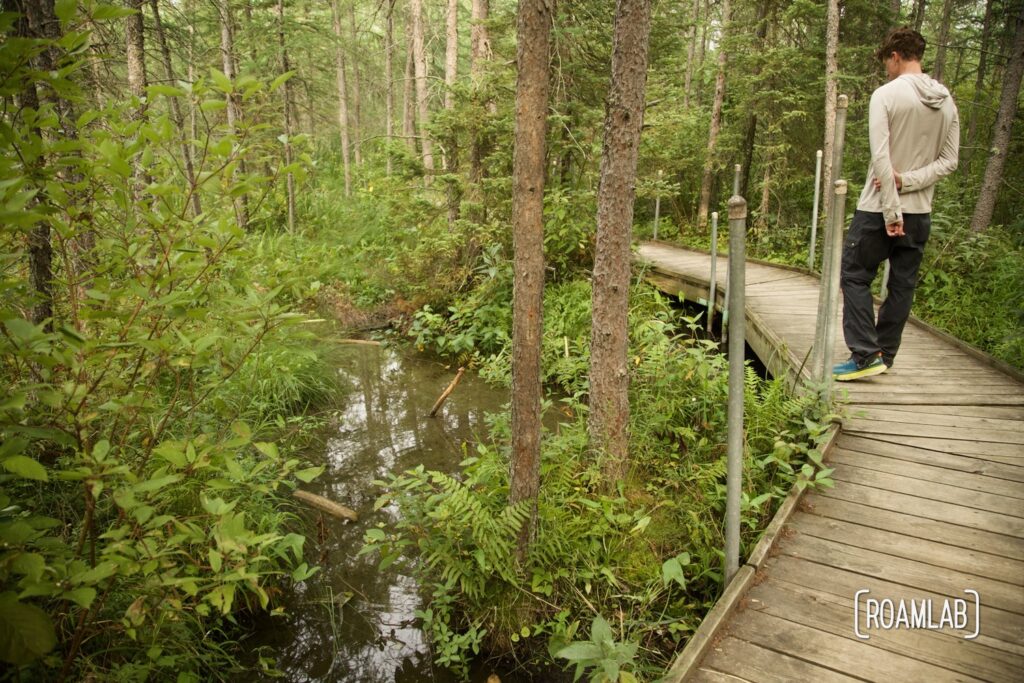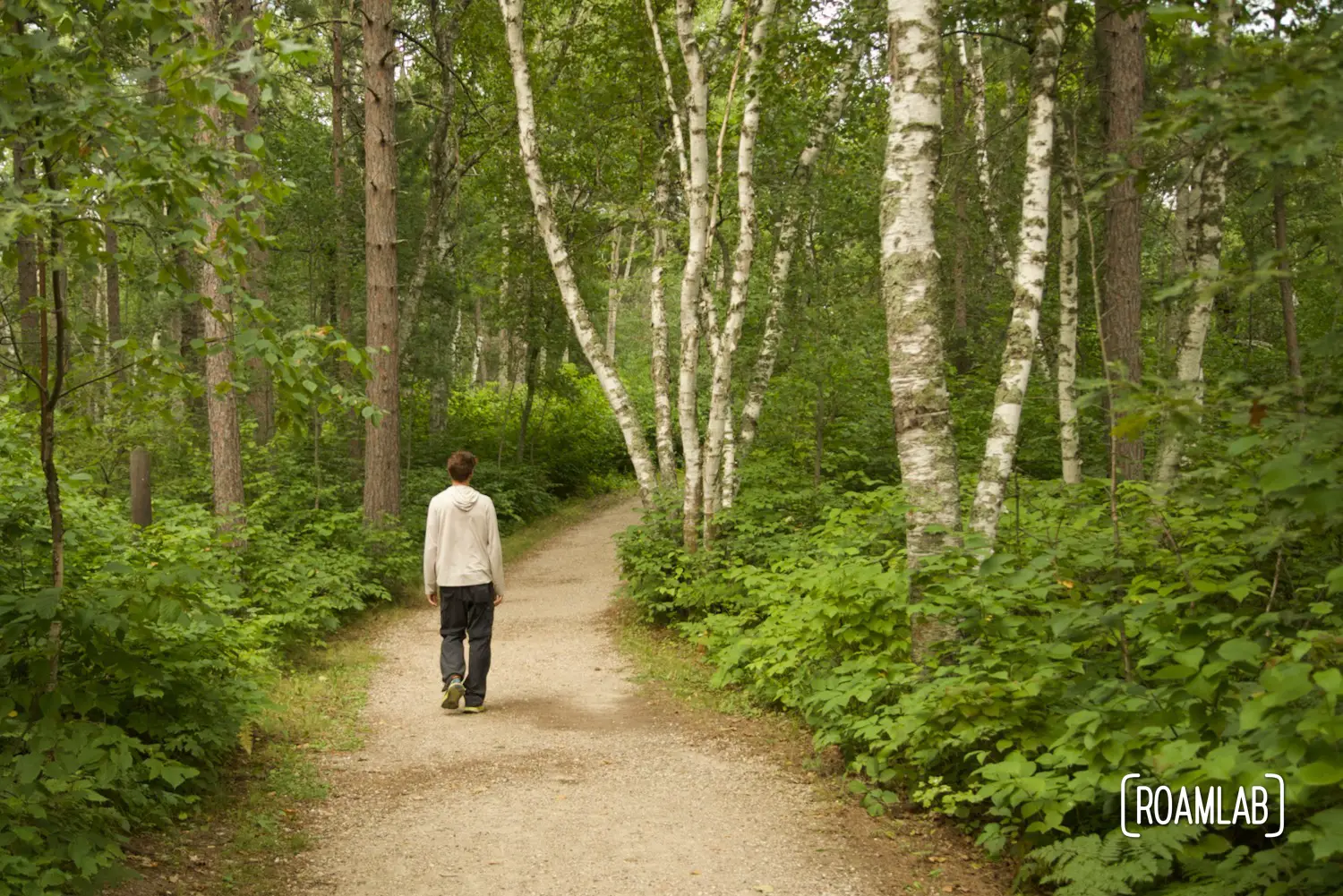There’s a good reason bogs are often considered to be mysterious, even ethereal environments. The saturated terrain is difficult to traverse. It’s too wet to get a steady foothold and too dry to travel by watercraft. Which means that people rarely visit these regions. But it’s a shame. Because bogs are home to a riot of plant life that often cannot be found anywhere else. Orchids, lady’s slipper, lily-of-the-valley, bog rosemary, calla lily, and even carnivorous plants thrive in such conditions. Fortunately, we can explore the bog in Lake Bemidji State Park, thanks to the .4-mile Bog Walk boardwalk that allows visitors to hike through this spongy terrain without harming the local plants or their shoes.
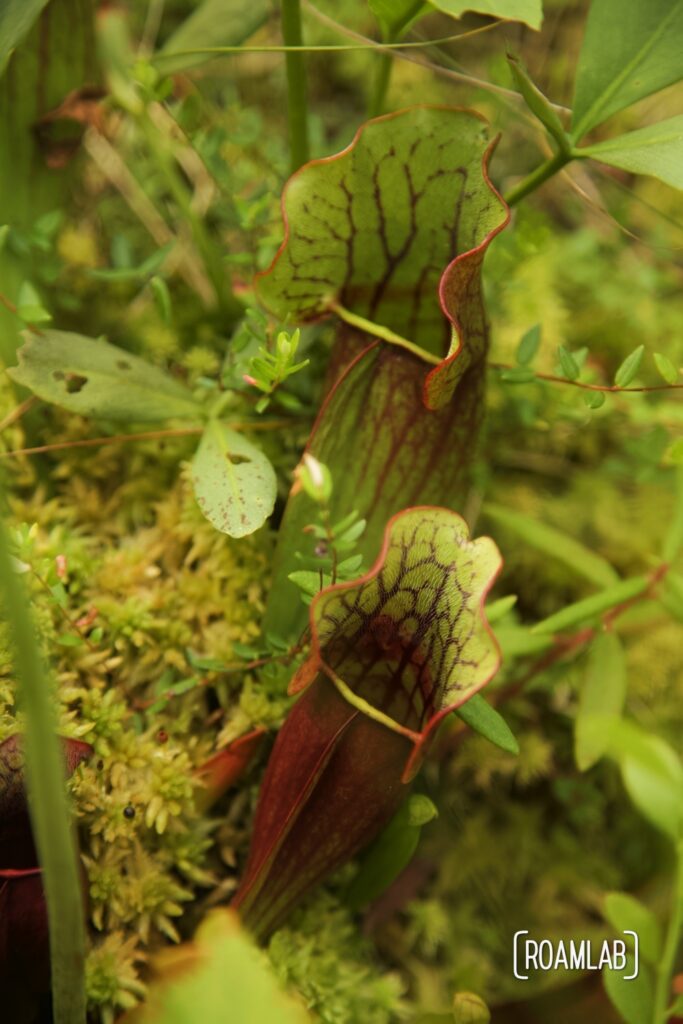
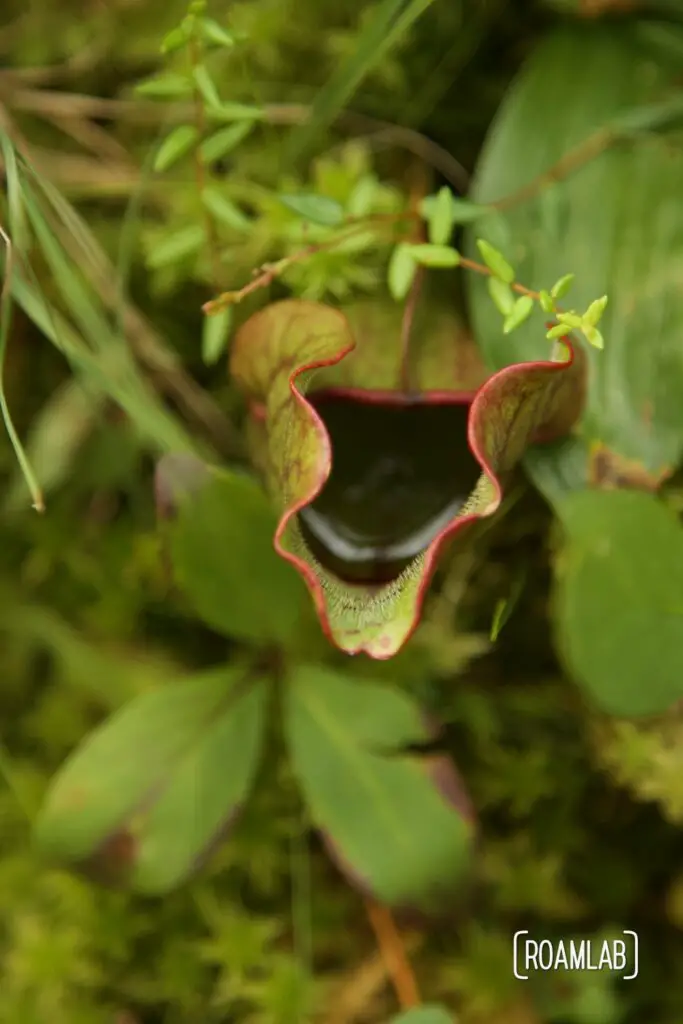
Ecology of the Bog Walk
Bemidji’s bog is more than just swampy land. It’s a rich and sensitive ecological environment characterized by acidic, nutrient-poor soils, waterlogged conditions, and sphagnum moss. There are nearly six million acres of peatland in Minnesota. Predominantly in northern Minnesota, where retreating glaciers have left depressions with poor drainage. Ideal conditions to start a bog.
The relatively cold conditions and slow water flow result in low oxygen levels, slowing the decay and breakdown of vegetation. Thus, moss and other vegetation grow faster than they decay, resulting in the build-up of partially decomposed matter known as peat.
The brilliantly green and diverse plant life of the bog may make it look like a nutrient-rich oasis. But that couldn’t be further from the truth. Most plants native to this region of Minnesota would struggle in a bog environment. The shift from forest along the Old Logging Trail to bog is dramatic. The bog habitat supports a variety of specially adapted flora and fauna, providing a glimpse into an ecosystem that has remained largely undisturbed.


Flora
The flora around the Bog Walk Trail is representative of a northern peat bog ecosystem. Shrubs and small trees such as Labrador tea, leatherleaf, and tamarack trees form a canopy over the shaded bog floor where ferns, moss, orchids, and other delicate plants jockey for space. Many are particularly suited for this environment, such as the Northern Coral Root, a small orchid that lives on decaying organic matter, much like mushrooms or other fungi. Or the Bog Rosemary, bog cranberry, and many other bog flora that have adapted to the dark conditions of the bog by developing evergreen leaves to collect nutrients year-round.
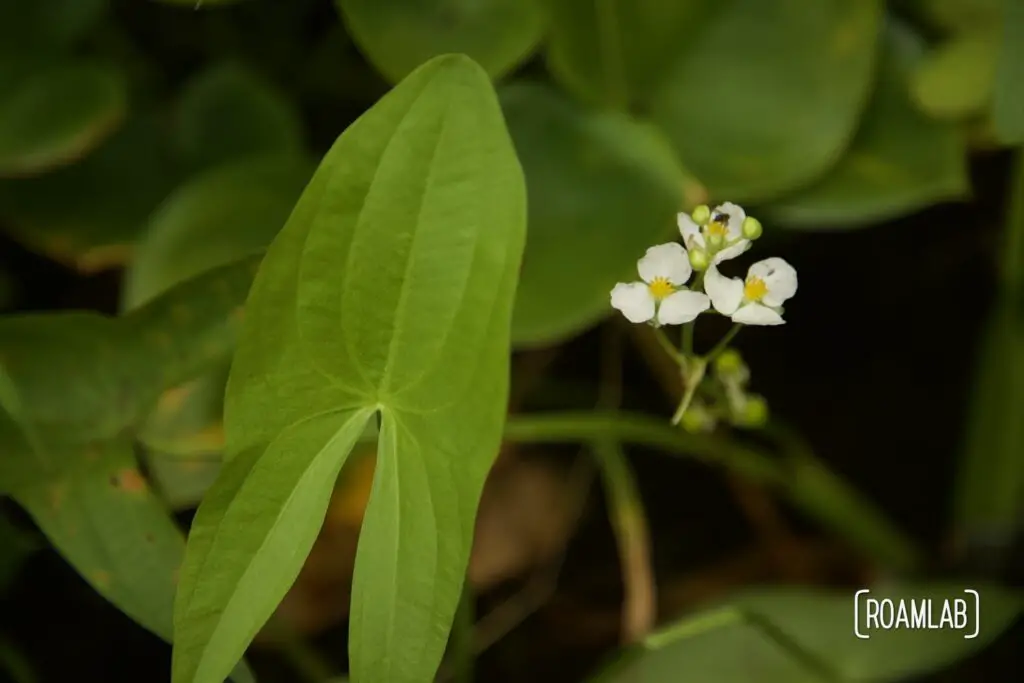
Carnivorous Plants
The nutrient-poor conditions of the bog have also led to the evolution of carnivorous plants that derive essential nutrients by capturing and digesting insects. The pitcher plant and Round-leaved Sundew can be found in the Bemidji State Park bog.
Pitcher Plants (Sarracenia purpurea)
The Sarracenia purpurea, commonly known as the pitcher plant, is one of the most iconic features of the bog. They have evolved a highly specialized leaf structure that forms a “pitcher,” filled with a liquid containing enzymes and bacteria. This carnivorous plant captures insects in its pitcher, where they are trapped and digested by enzymes, providing the plant with nutrients that are scarce in the bog environment.
- Trapping Mechanism: The inside of the pitcher is lined with downward-pointing hairs that make it difficult for insects to climb out once they have entered. The pitcher’s rim is slippery, causing insects to fall into the liquid below.
- Digestion: Once trapped, the insects are broken down by enzymes and bacteria, allowing the plant to absorb nutrients such as nitrogen and phosphorus.
- Adaptations: The pitcher plant’s vibrant color, nectar, and scent attract insects, while its unique structure enables it to thrive in an environment where other plants struggle.

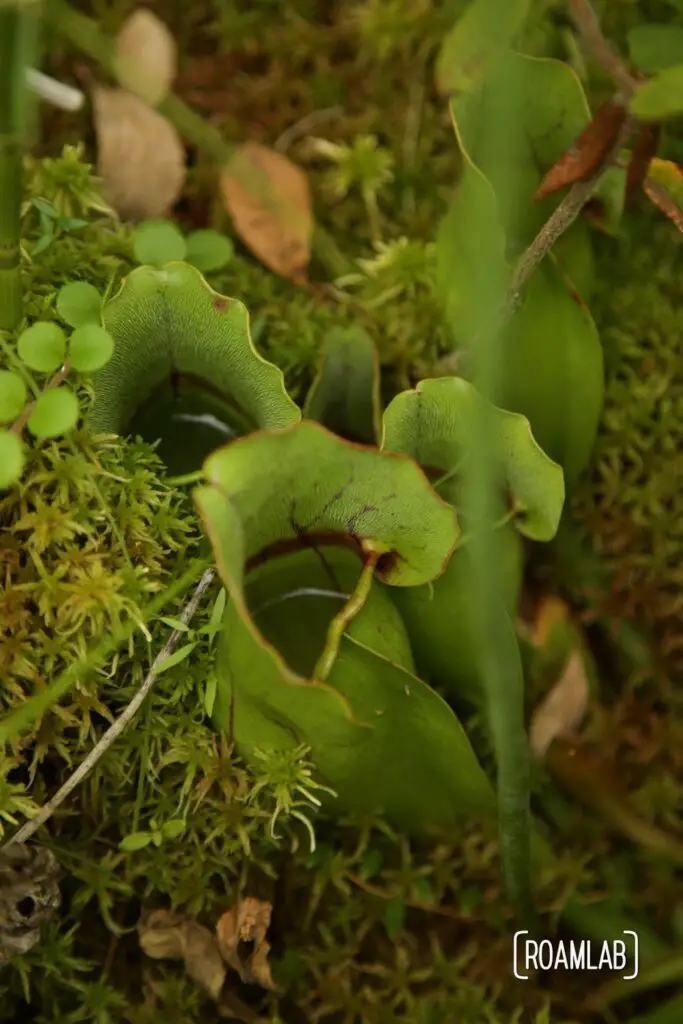
Round-Leaved Sundew (Drosera rotundifolia)
Sundews (Drosera rotundifolia) are very small and common to the bog but easy to miss among the other flora. These plants capture insects using sticky, gland-tipped hairs on their leaves. The leaf slowly curls around the prey and then slowly digests it, allowing the plant to absorb nutrients through the leaf surface. Sundews are of significant interest to botanists and naturalists due to their unique adaptation to their environment.
- Trapping Mechanism: The sticky hairs on the sundew’s leaves ensnare insects that land on the plant. The more the insect struggles, the more entangled it becomes.
- Digestion: Enzymes are secreted to digest the trapped insect, releasing nutrients that are then absorbed by the plant.
- Adaptations: Sundews have evolved this insect-catching ability to supplement their nutrient intake, enabling them to flourish in the nutrient-deficient bog soil.
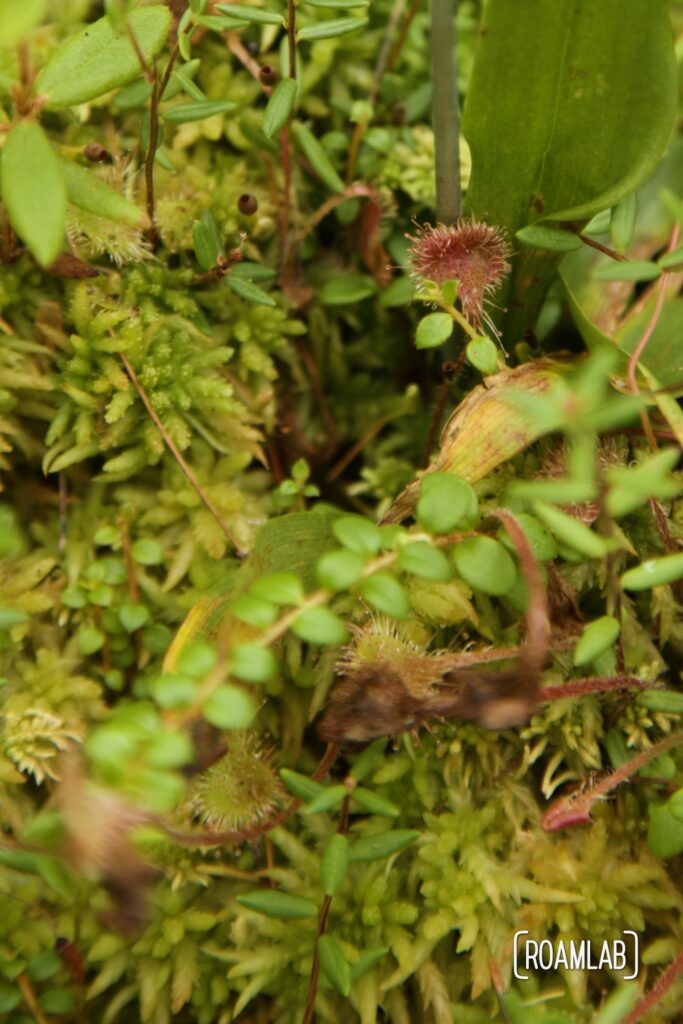

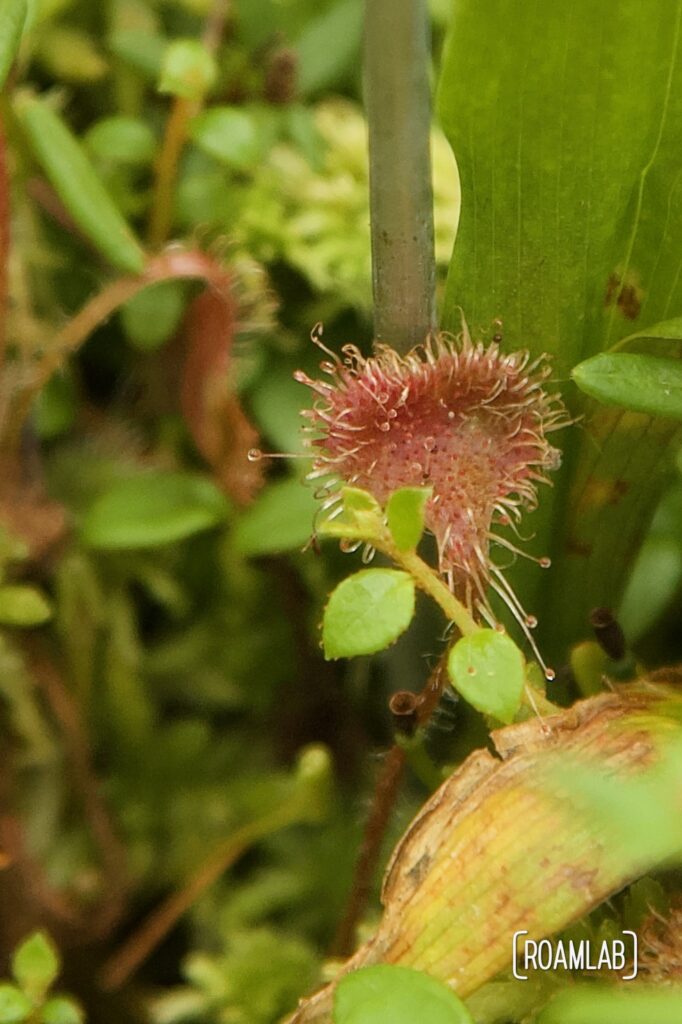
The Bog Walk Trail
The Bog Walk Trail is a boardwalk that stretches approximately one-half mile into the bog, allowing visitors to observe the unique ecology without disturbing the sensitive environment. The trail is designed with interpretive signs that provide information about the various plant species, ecology, and conservation considerations of the bog.
The trail is open year-round and is accessible to visitors of all ages. It is carefully maintained to ensure safety and to minimize impact on the delicate ecosystem. Guided tours are often available, led by park naturalists who provide insights into the bog’s ecology and inhabitants.
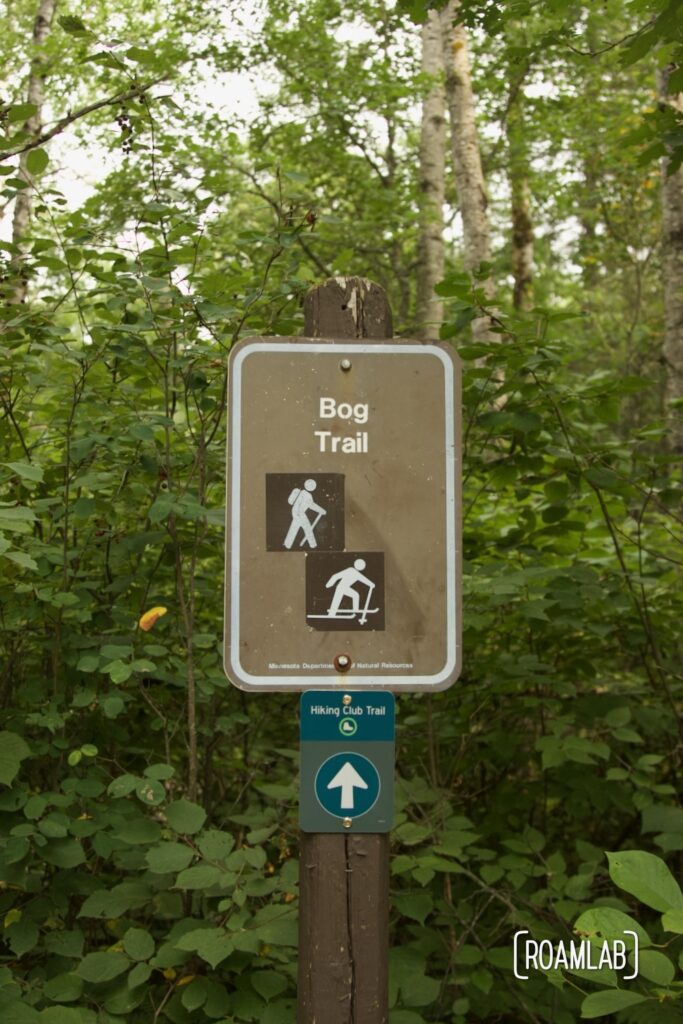
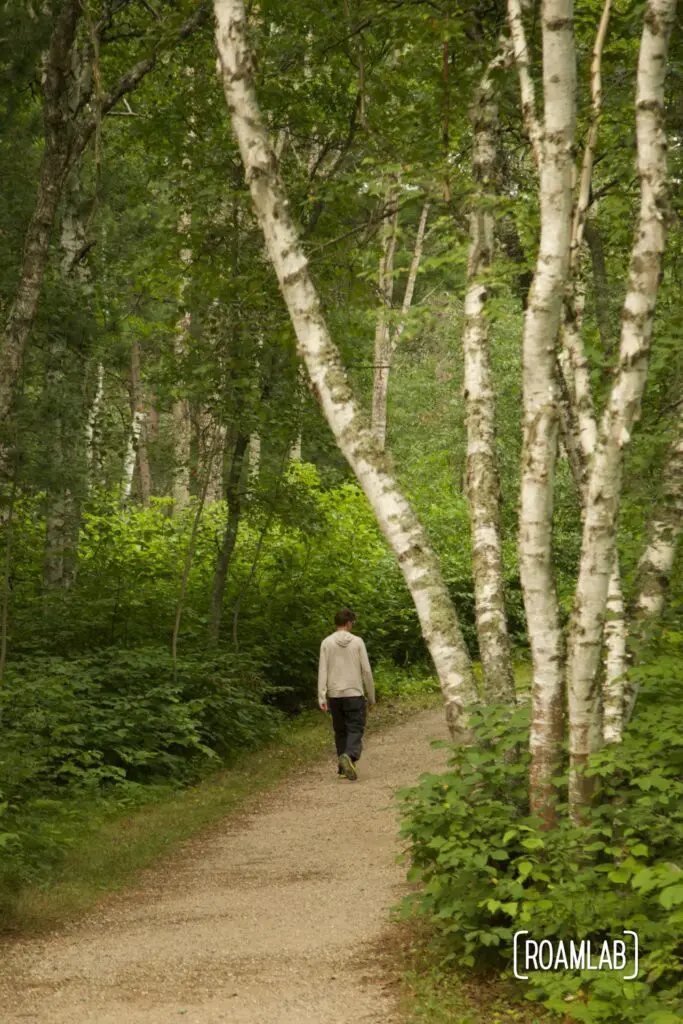
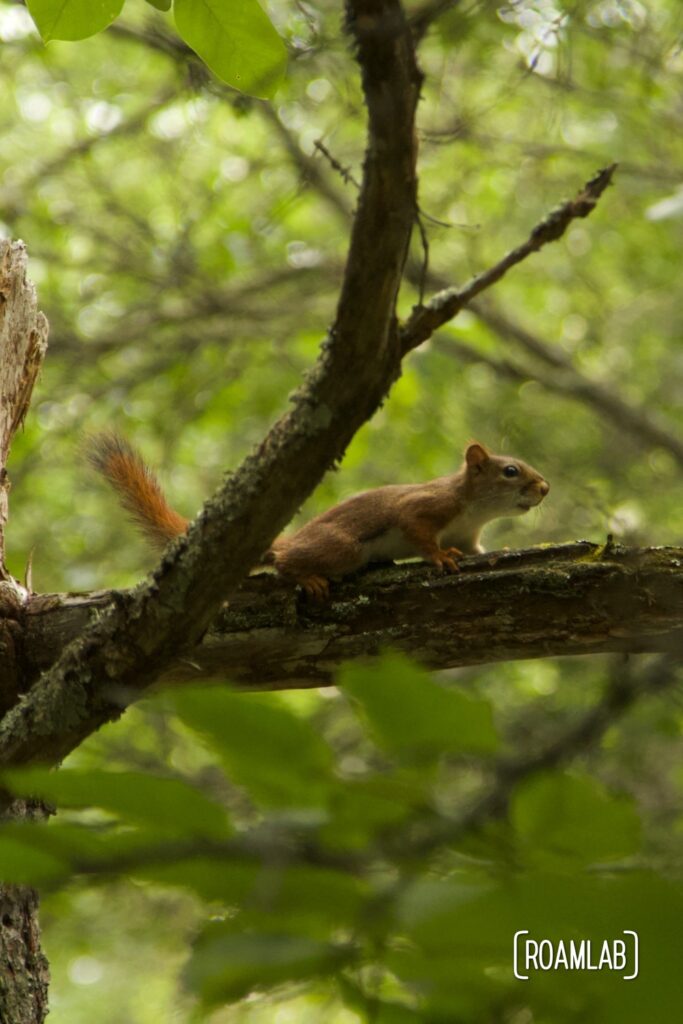
Leave No Trace
The Bog Walk Trail emphasizes conservation and environmental stewardship. Visitors are encouraged to stay on the designated path to preserve the integrity of the ecosystem and to prevent damage to the specialized plant life that thrives there.

Our Experience
We come to Bemidji State Park specifically to explore the Bog Walk. At half a mile, it is certainly not for the physical exertion. We are here for the plants. The carnivourous plants. We barely start down the boardwalk when I am distracted by a strange, green flower that might as well have been from the set of a science fiction film. I am so entranced that it isn’t until I show the flower to Chris that he points out the rest of the pitcher plant that it sprouted from. From the get-go, I am getting what I came for.
Unfortunately, we arrived too late in the season to spot any orchids. But there is one other plant I am determined to find: the sundew. Despite signs that list it as common in the bog, I can not spot one. It isn’t until we reach the end of the boardwalk that we encounter a sign pointing out a sundew. That’s when I understand why I keep missing them: they are so small! When we get back to our computers, I review the pictures that I took during our hike and that’s when I started spotting more sundew that I had missed in the moment.
So, a lesson learned: visit the Bog Walk in Bemidji State Park. It may very well be the highlight of your trip. Read ALL the interpretive signs and be sure to take plenty of pictures.
